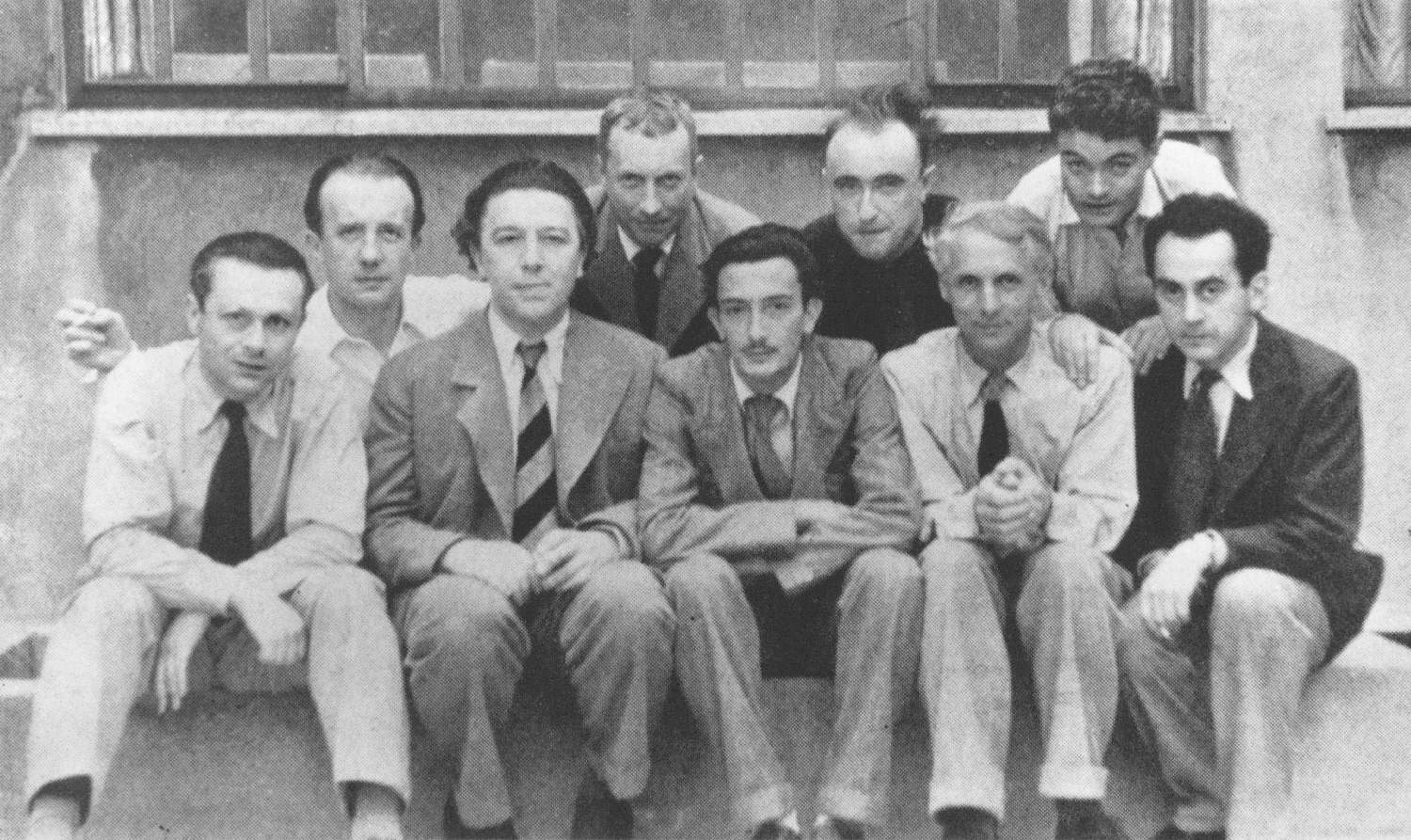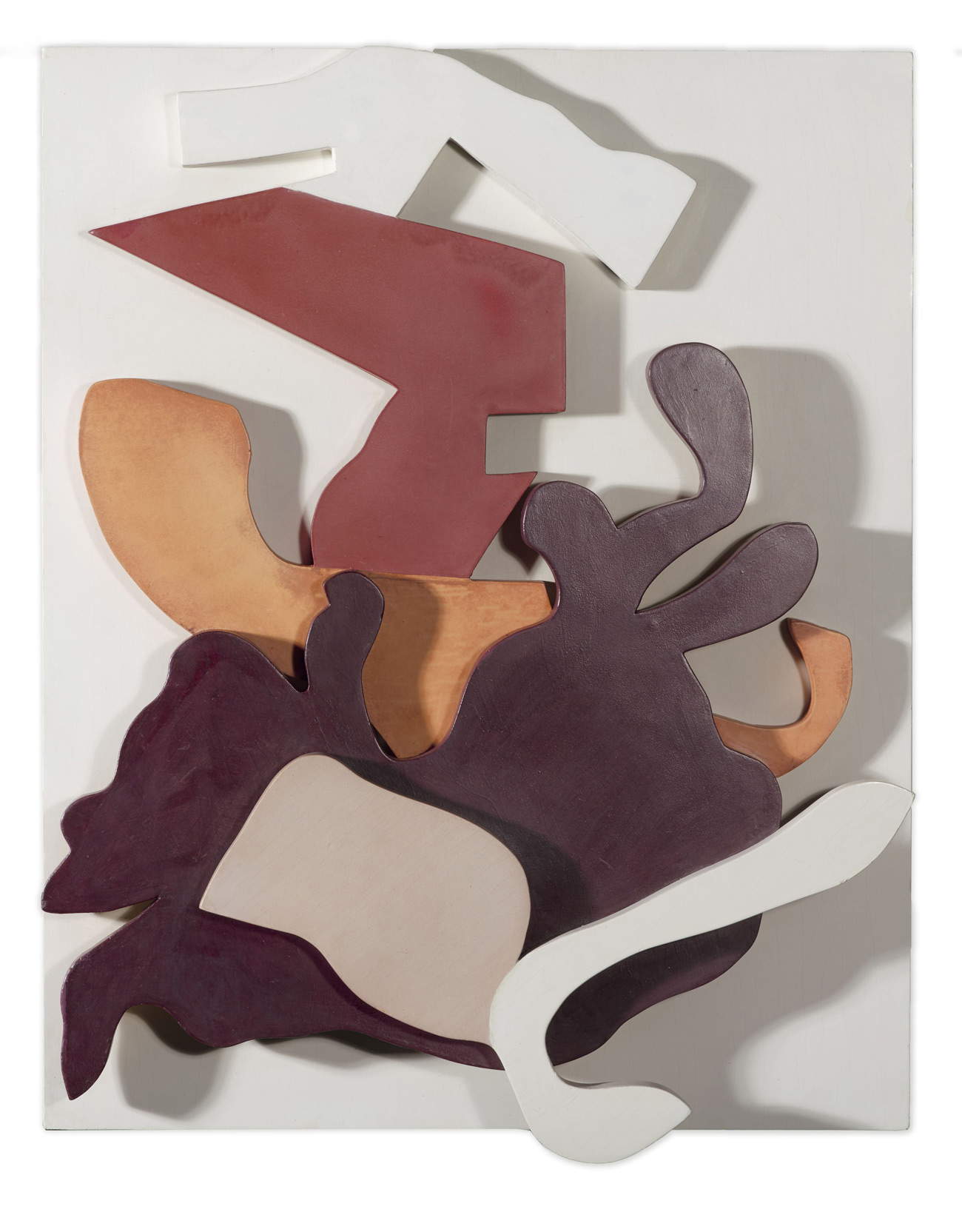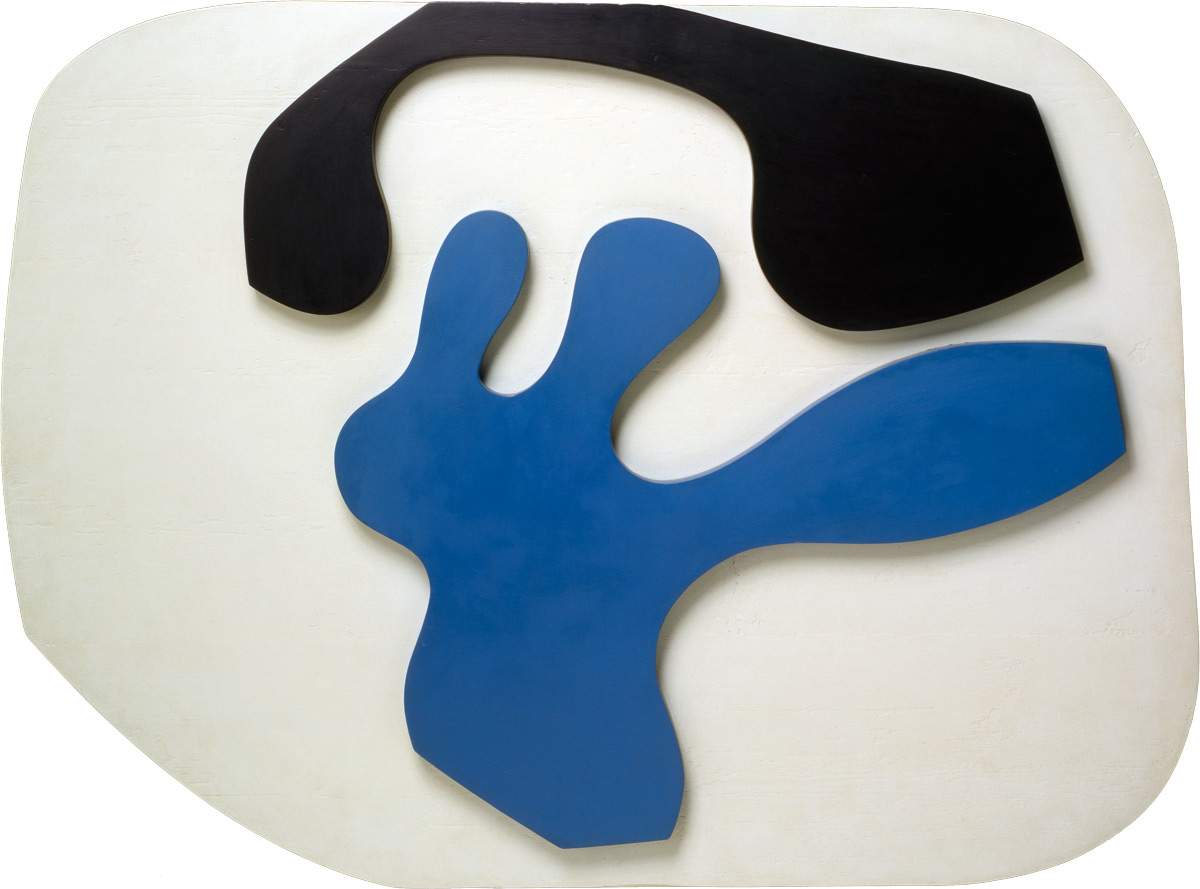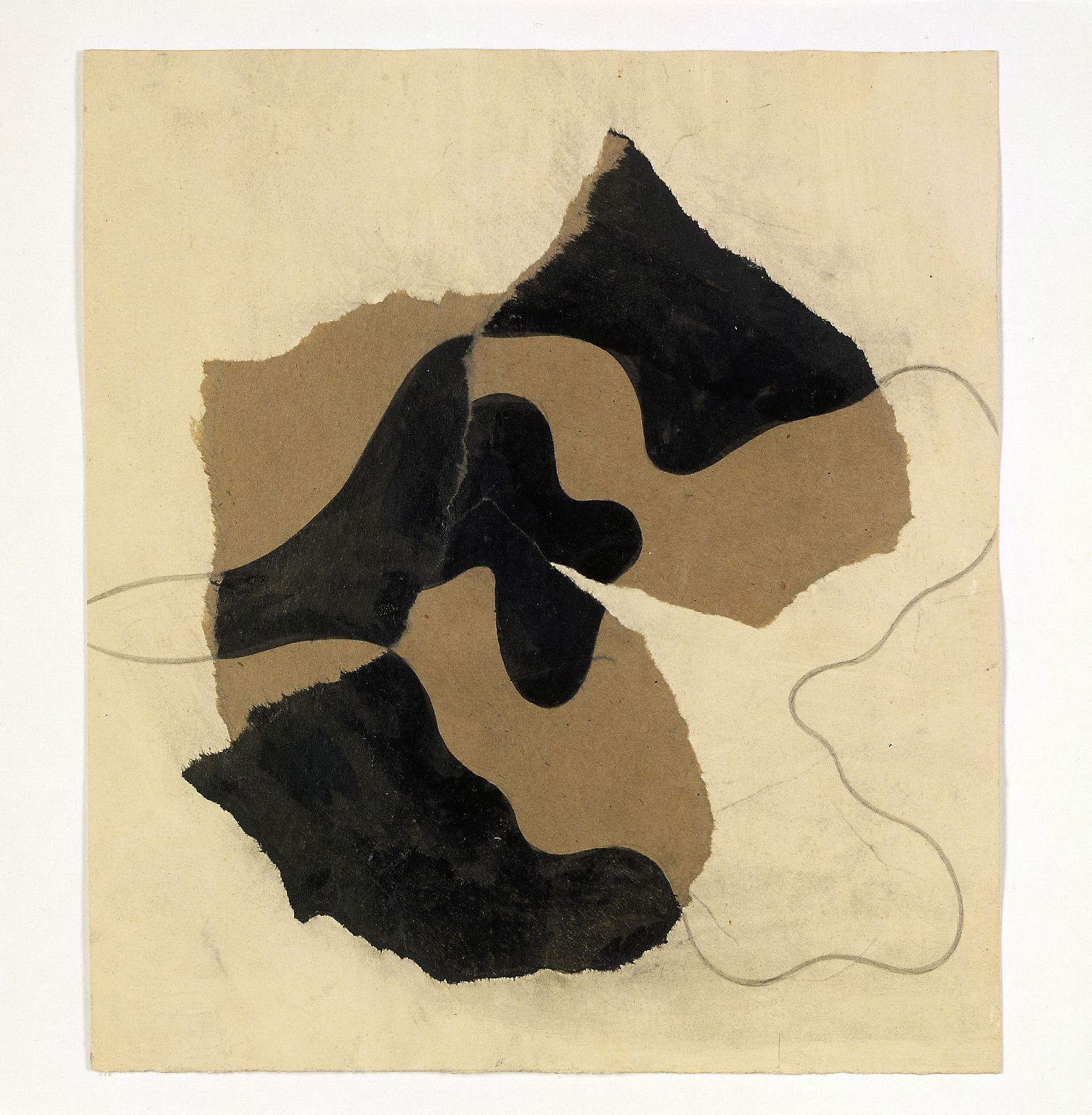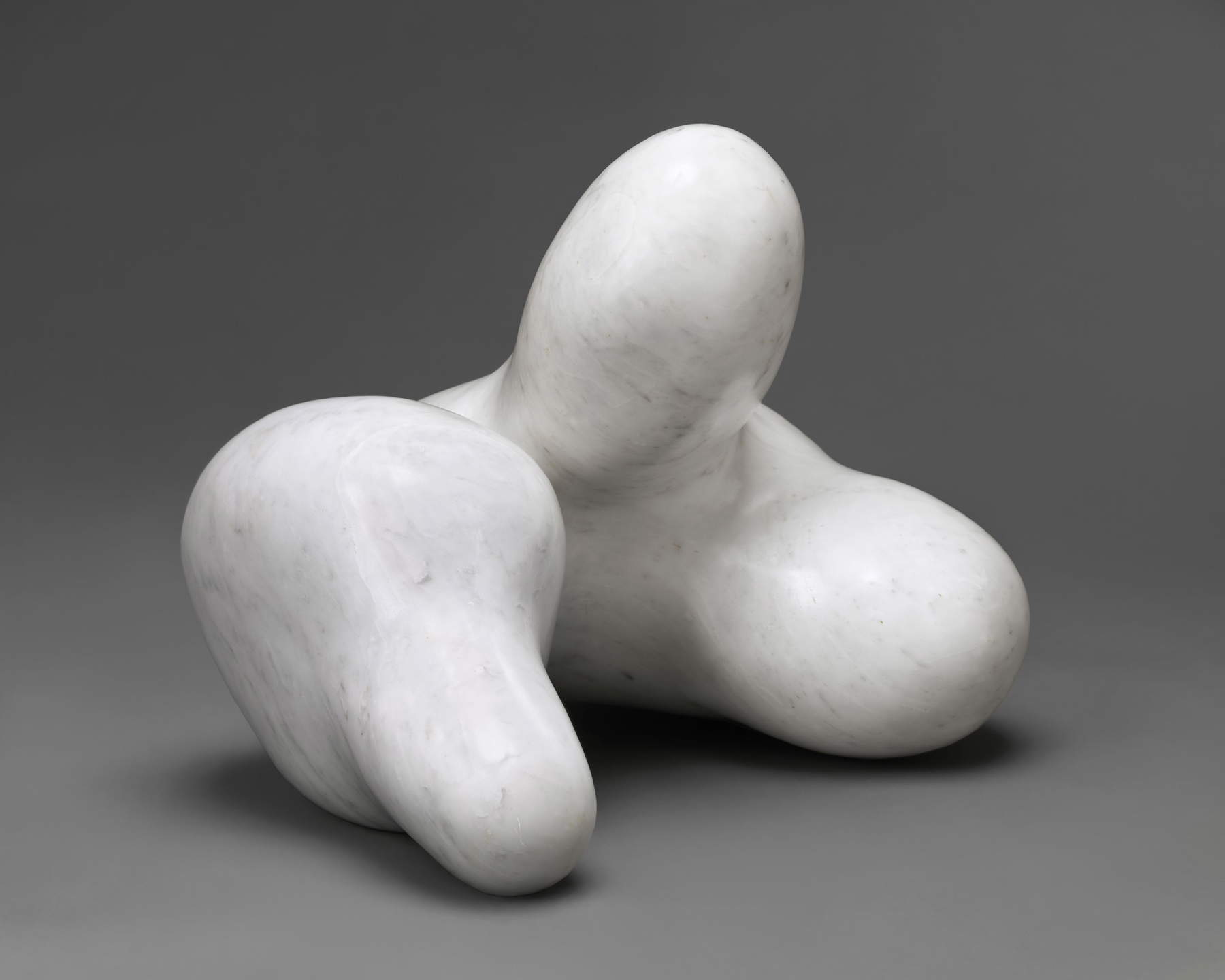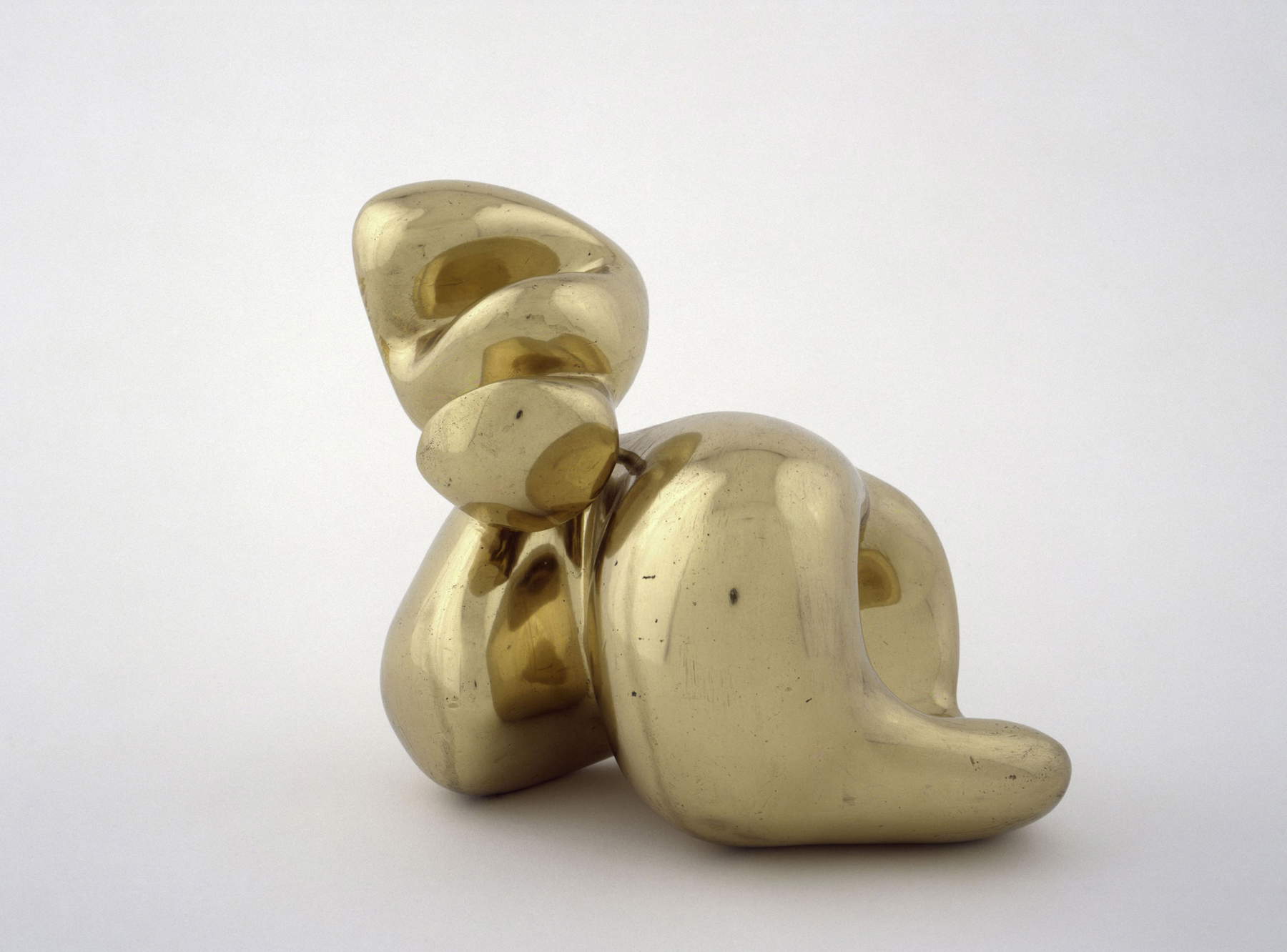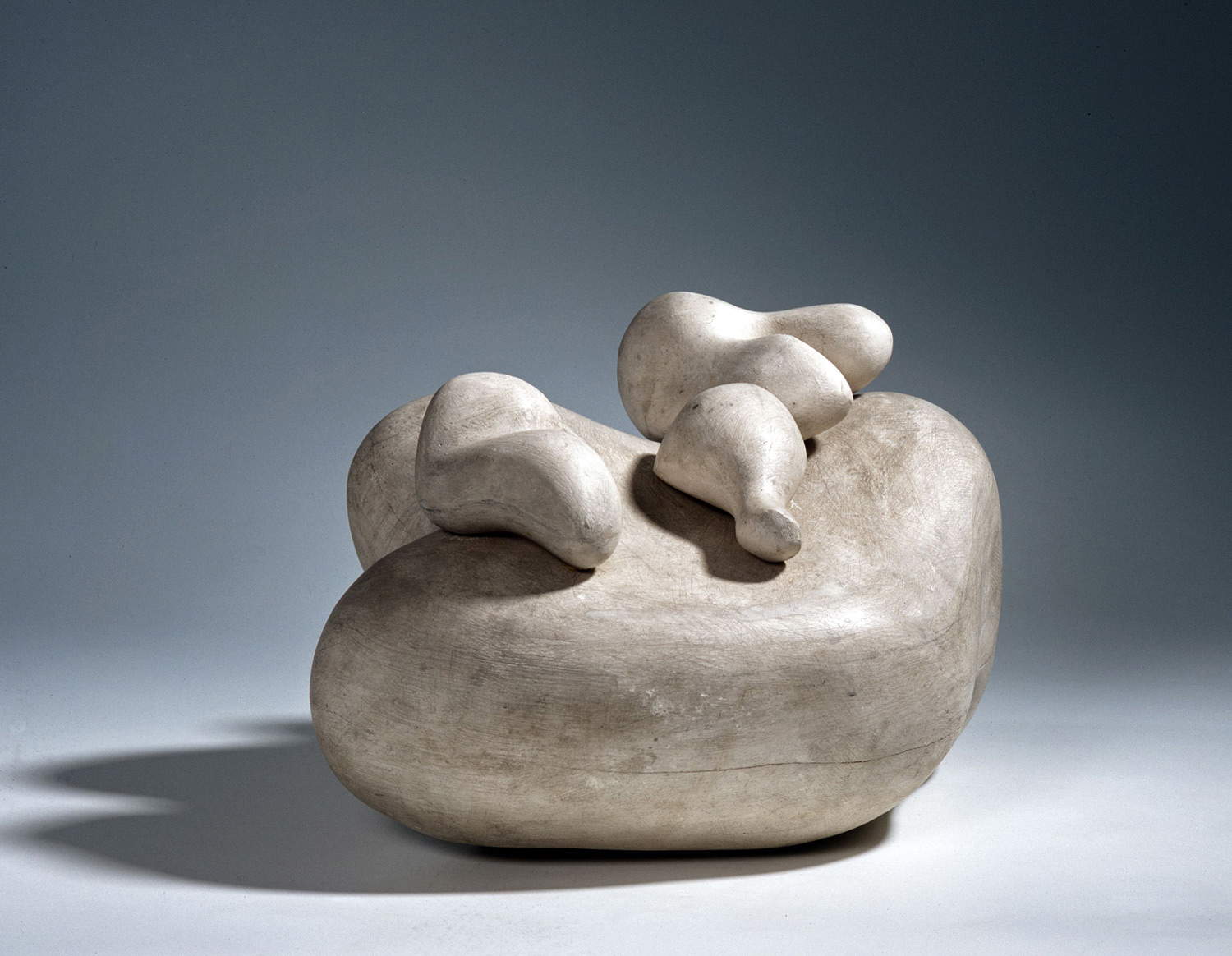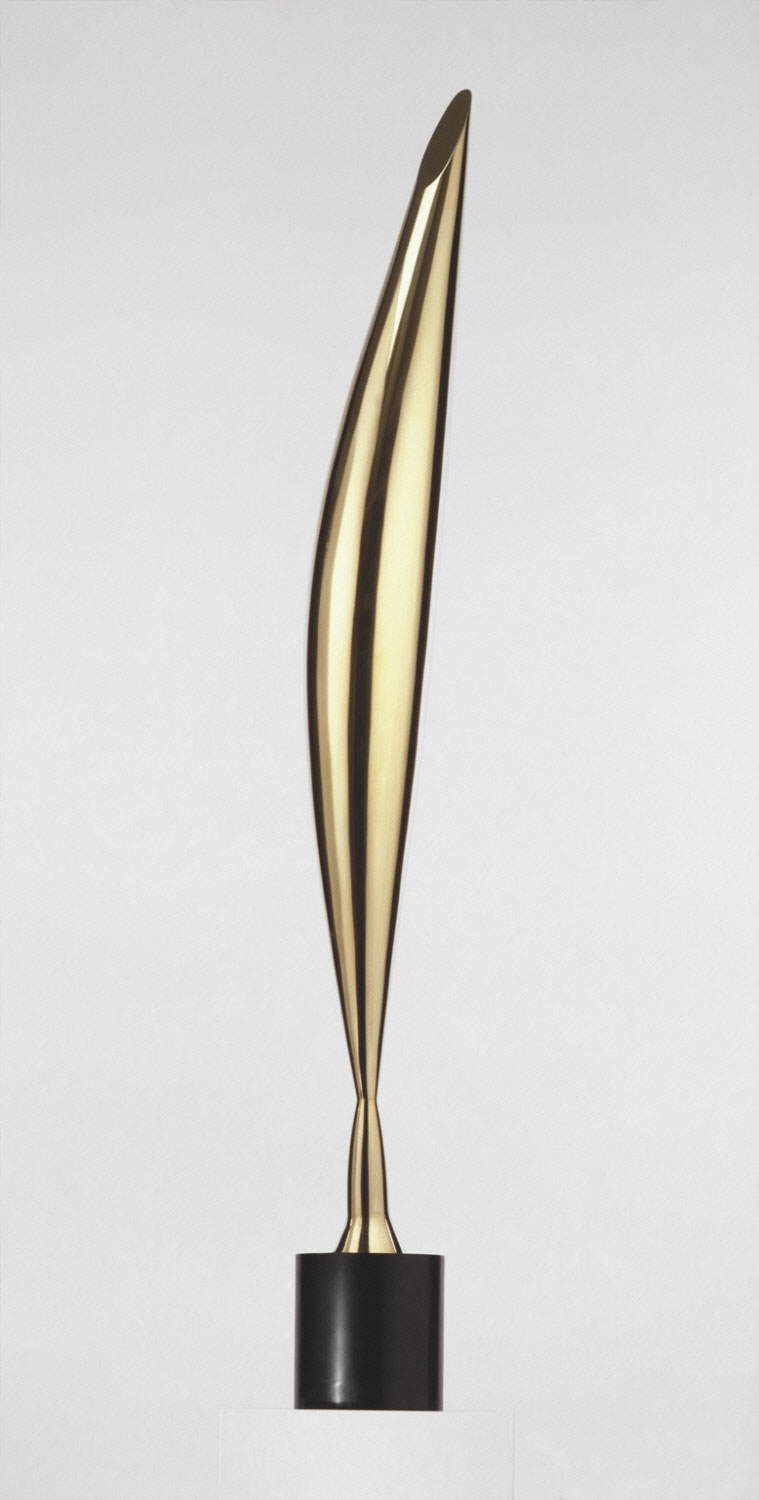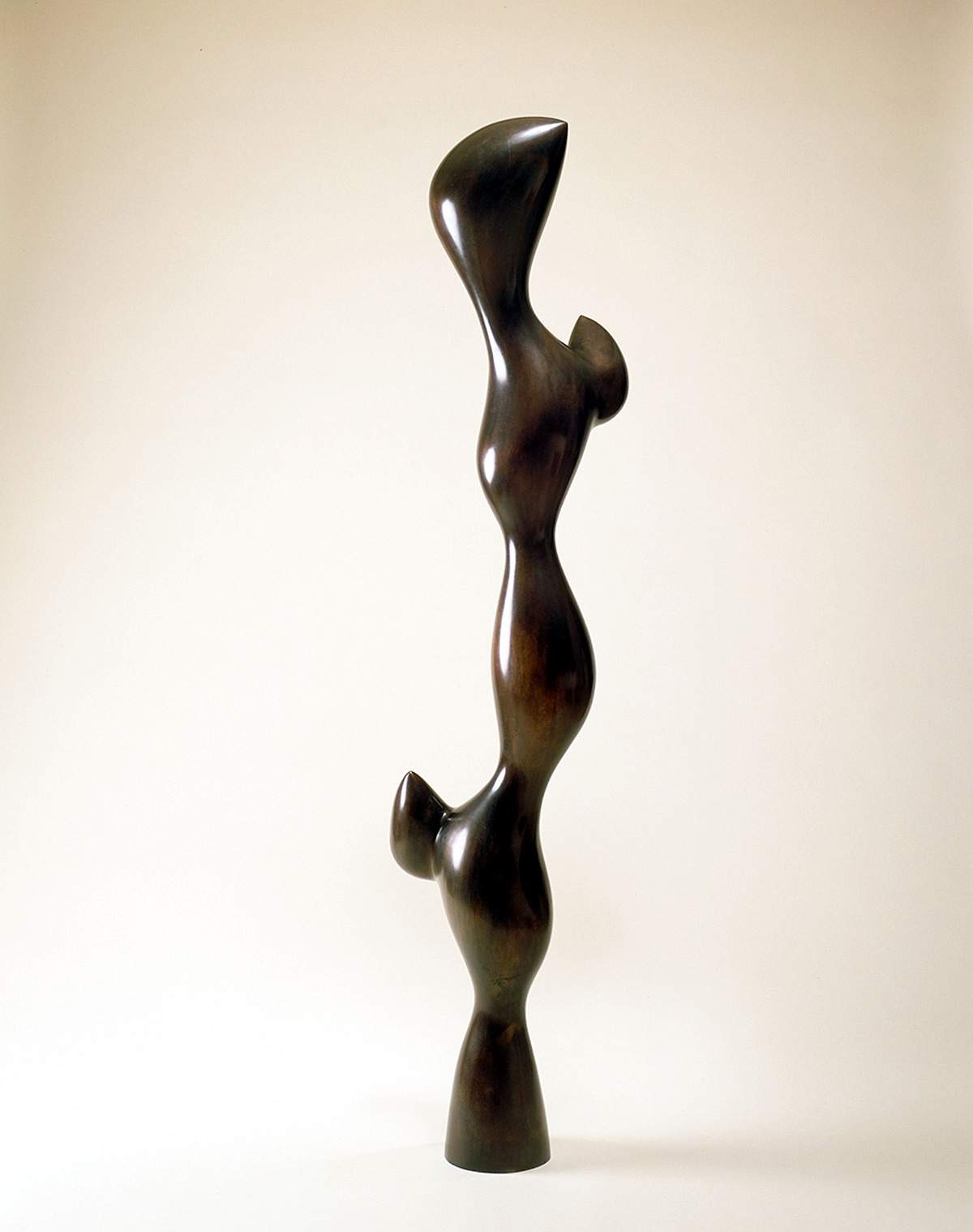by Federico Giannini, Ilaria Baratta , published on 19/04/2019
Categories: Works and artists
/ Disclaimer
The relationship between art and nature is a constant in the work of Hans Arp, among the founders of Dadaism. This article outlines a journey through his works following the major exhibition at the Peggy Guggenheim Collection (April 13-September 2, 2019).
“For Arp, art is Arp.” For Arp, art is Arp: so wrote, in 1949, Marcel Duchamp (Blainville-Crevon, 1887 - Neuilly-sur-Seine, 1968), between the serious and the facetious, to sum up in just five words the poetics of Hans Arp (Strasbourg, 1887 - Basel, 1966). Thirty-three years had already passed since Duchamp and Arp, along with other artists, had founded the Dada movement. Both were present at the opening of the Cabaret Voltaire in Zurich in February 1916, both attended the meeting from which the name “Dada” emerged, and Arp himself was instrumental in spreading Dadaist ideas in Germany. Yet it has been pointed out that Arp’s work lacked the characteristics often associated with the Dadaists: open provocation, violence, grit, bizarre and unusual solutions, montages, and ready-made. One of the greatest critics of the twentieth century, Harold Rosenberg, pointed out that if Dada was anti-art, then Arp was an outsider. “Although Arp shared the view that the art of the past had exhausted its role as a source of inspiration, he never doubted the value of art and never wanted to be anything but an artist.” For Arp, Dada was not a violent attack, but was a kind of recuperation, a redemption of art “from the ruins of the centuries,” as he had occasion to specify: he was convinced that Dada was not just provocation, not just noise, and not just some kind of great joke. Dadaism’s destiny was, if anything, to create an anonymous and collective art, as he would explain at length in an article published in Jours effeuillés in 1944: “Concrete works of art will no longer have to be signed by their authors. These paintings, these sculptures (these objects) will have to remain anonymous, in the great study of nature, like clouds, mountains, seas, animals, men. Artists will have to work in communities like the artists of the Middle Ages.”
The aspiration for an anonymous, collective art was Arp’s response to the gentrification and institutionalization of art against which the Dadaists were raging. Rosenberg pointed out that, perhaps, Dada’s “metaphysical interpretation of Dada as a loss of self” also stemmed from the dual nature of his identity: born in a borderland,Alsace, to a French mother and a German father, throughout his life Arp interchangeably used the German name Hans with its French translation Jean, using one or the other depending on contexts. And by his desire to arrive at a collective and anonymous art, Arp also intended for Dada to redefine the boundaries of art: “we have declared,” he wrote, “that everything that has an existence or is created by a man is art. Art can be evil, boring, wild, sweet, dangerous, euphoric, ugly, or a joy to the eyes. All the earth is art. Drawing well is art--the nightingale is a great artist. Michelangelo’s Moses: bravo! But even at the sight of an inspired snowman the Dadaists still say ’bravo’.” His was likewise a response to what was happening around him. Arp, like all the Dadaists, had gone through (and was going through, at the time he founded the movement together with Duchamp, Tristan Tzara, Marcel Janco, Richard Huelsenbeck and Hans Richter) the drama of World War I, had known the nefarious products of nationalism (which Arp, moreover, opposed, just as he opposed militarism), and experienced firsthand the contradictions of his homeland, a contested land: since art, too, had led to the world Arp lived in, art had to be changed, radically reformed. And from his strongly anti-institutional idea of art also derived his great interest in the spaces of nature. Nature and human creativity thus come together in Arp’s early works, reliefs created with natural materials (wood), based on forms that blend and add together in a seemingly random way (as happens in nature), with shapes that resemble what can be found in nature (a tree, a plant, a rock, an animal). A kind of nature on which the hand of man acts, somewhere between abstraction and representation.
The exhibition Arp’s Nature, a monograph on the Strasbourg-based artist organized first at the Nasher Sculpture Center in Dallas from Sept. 15, 2018 to Jan. 6, 2019, and later at the Peggy Guggenheim Collection in Venice between April 13 and Sept. 2, 2019, created a path through Arp’s sculptures from different collections to highlight two fundamental aspects: the contribution Arp made to the redefinition of art, and the role nature played in his production. One of his earliest works, Plant-hammer (Terrestrial Forms), made in 1916 and currently housed at the Gemeentemuseum in The Hague, Netherlands, is one of the most important sculptures for understanding the early developments of Arp’s poetics: exhibited that same year at the Kunstsalon Wolfsberg in Zurich, it is a concentration of natural (or “terrestrial,” to use the artist’s own expression) forms, inspired directly by what Arp saw while walking among nature. “I simplified the forms,” Arp would explain, "and condensed their nature into ’dynamic ovals,’ depictions of the eternal processes of evolution and the becoming of the body. The wooden relief Earth Form [i.e., Plant-Hammer, ed.], reproduced by Picabia in his journal 391, dates from this period; it begins a long series on which I have not yet finished working. It is forms of this kind that inspired the woodcuts I produced for Tristan Tzara’s books, Vingt-cinq poèmes and Cinéma calendrier du coeur abstrait." The flowing and overlapping of forms, moreover, rises to symbolic reference to transformation andevolution: concepts that are also expressed on a practical level (Arp would in fact return to work on his Plant-hammer again many years later, for example by recoloring individual forms: which happened with several of his other works, for example with Inverted Blue Shoe with two heels under a black vault, one of his "language-objects, " midway between painting and sculpture, with which the Franco-German artist created a set of forms that could lend themselves to multiple interpretations, have more or less references to reality, be read in one or the other way, even be oriented and hung from different sides and thus open to different meanings even according to their orientation). These are images that certainly feel the effects of the environment in which Arp was formed: for example, they can be linked to certain achievements of Vasily Kandinsky (Moscow, 1866 - Neuilly-sur-Seine, 1944), who was among other things Arp’s friend and to whom his graphic practice was very close, but at the same time these are radically innovative and unprecedented works.
 |
| Portrait of Hans Arp (ca. 1926). Courtesy Stiftung Arp e.V., Berlin/Rolandswerth |
 |
| Tristan Tzara, Paul �?luard, André Breton, Hans Arp, Salvador Dalí, Yves Tanguy, Max Ernst, René Crevel, and Man Ray. Paris, ca. 1930. Courtesy Stiftung Arp e.V., Berlin/Rolandswerth. |
 |
| Hans Arp, Plan-mart (Earth Forms) (1916; painted wood, 62 x 50 x 8 cm; The Hague, Gemeentemuseum). © 2019 Artists Rights Society (ARS), New York/VG Bild-Kunst, Bonn / © Jean Arp, by SIAE 2019. Courtesy Gemeentemuseum Den Haag |
 |
| Hans Arp, Inverted Blue Shoe with Two Heels under a Black Vault (c. 1925; painted wood, 79.3 x 104.6 x 2.5 cm; Venice, Peggy Guggenheim Collection). © 2019 Artists Rights Society (ARS), New York/VG Bild-Kunst, Bonn / © Jean Arp, by SIAE 2019 |
 |
| Hans Arp, Untitled (dessin déchiré) (1934; torn paper collage, ink and pencil, 24.5 x 22 cm; Berlin/Rolandswerth, Stiftung Arp e.V.) © 2019 Artists Rights Society (ARS), New York/VG Bild-Kunst, Bonn / © Jean Arp, by SIAE 2019 Photo: Wolfgang Morell/Stiftung Arp e.V., Berlin/Rolandswerth |
 |
| Vasily Kandinsky, Study for the vignette at theIntroduction to The Spiritual in Art (ca. 1910; India ink and pencil on paper mounted on cardboard, 7.2 x 10.2 cm; Munich, Städtische Galerie im Lenbachhaus) |
Reliefs such as Plant-Hammer or as Inverted Blue Shoe with Two Heels under a Black Vault in fact constitute, according to Rosenberg, Hans Arp’s “most astonishing invention.” His juxtapositions of often distant elements (the plant and the hammer are concrete examples) reverberated with “the tradition of Rimbaud’s deliberate slippages of meaning,” causing them to materialize in elementary plastic forms: and the sculpture, the American scholar further emphasized, “makes Arp’s arbitrary verbal images exist as objects.” These are essential, simple, almost childlike but at the same time elegant sculptures, humorous without being fiercely provocative, where the arrangement of forms sometimes appears to be governed by chance, a reflection of irrational activity. We find ourselves, after all, in the years when Paul Klee went in search of the most responsive motivations for making art, in the years when Kandinsky invented abstract art by drawing from sources of inspiration far from the traditional ones, in the period when the foundations were laid for the birth, in the 1920s, of surrealism. Chance, it is worth noting, is one of the foundational elements of Arp’s poetics: it appears from his earliest achievements, the random arrangement of elements is characteristic of his poems, and from the 1930s it would also enter the titles of his works (for example, in Objects Arranged According to the Law of Chance). And chance is also instrumental in understanding the way the artist looked at nature. Scholar Catherine Craft, curator of Arp’s The Nature of Arp, has well outlined the terms of the presence of chance in Arp’s work: "unlike Kelly or his contemporary Marcel Duchamp, Arp never systematizes his use of chance. Instead, he uses it intuitively, allowing pieces of paper to fall [Arp also resorted to the laws of chance in his collages, ed.], but always reserving the right to change the position in which they fell, just as he shifts the elements of reliefs to determine position, guided by touch as much as by sight. These approaches result in compositions that, surprisingly, seem barely organized. Arp never relinquishes control of his art, but he appreciates the way the ’laws of chance’ allow him to incorporate the experience of nature (that incredible random arrangement of flowers in a meadow) into his works, without imitating their outward appearance."
Even following the Dada experience, the relationship with nature would continue to animate Arp’s art. In Configuration Strasbourgeoise, a 1931 text, Arp reiterated the principles that governed how he dealt with nature: “we do not want to copy nature, we do not want to reproduce, we want to produce, we want to produce as a plant produces a fruit and not reproduce. We want to produce directly and not in a mediated way.” Configuration Strasbourgeoise is a fundamental text since in it Arp outlines his attack on abstract art (or rather, on the concept of “abstraction” understood in a certain sense) and, conversely, his desire to arrive at aconcrete art, and deepens, as seen from the proposition just quoted, the link that art must have with nature. For Arp, concreteness does not necessarily establish what art should stand for: concreteness is, if anything, an opposition toappearance (for Arp, abstraction was appearance) and sterility, and concrete art is a dynamic, fluid, evolving, energetic, vital, transforming art. An art that is a reflection of nature and has more to do with creative processes than with the end result. Art is not opposed to nature. For Arp, art and nature are one and the same: in one of his best-known writings, �? propos d’art abstrait, which also became famous for the definition of art contained therein (“art is a fruit that grows in man, like a fruit on a plant, or a baby in its mother’s womb”), the artist recalled having a discussion with Piet Mondrian about the connection between art and nature: Mondrian drew a distinction by stating that “art is artificial and nature is natural,” and Arp had expressed his displeasure with this opinion by reiterating that, in his view, nature is not in opposition to art, because art, too, originates from nature and is sublimated and spiritualized through human action. It was from this period, from the 1930s, that Arp began to devote himself to three-dimensional sculpture, and he titled the first works he produced in these years Concretions: the term concretion referred not only to his desire to arrive at aconcrete art, but also to the phenomena of nature itself (“Concretion,” Arp would have written, “indicates the natural process of condensation, hardening, coagulation, thickening, common growth. Concretion defines the solidification of a mass. Concretion refers to the condensation, the thickening of earth and stars. Concretion refers to the solidification, the mass of stone, plant, animal, man. Concretion is something that has grown. I want my work to find a modest place in the woods, in the mountains, in nature.”).
The Concretions are full-length sculptures that result from the union of smaller components; they have sinuous, elliptical shapes; they present elements that join together to form unexpected and unpredictable compositions (nature itself, after all, is unpredictable). They are sculptures that communicate the idea of metamorphosis, transformation, growth (Rosenberg wrote that Arp’s sculptures present themselves as “ambiguous forms related to the forms of nature: a torso might also be a leg, a vegetable turns into an animal, a star might be a starfish, buds become breasts.” look, for example, at Head and Shell in the Peggy Guggenheim Collection), their roundness becomes almost synonymous with the generating force of nature as well as with a dimension of uninterrupted flow, and they lose the narrative context that, on the contrary, the sculptor had imagined for some of his earlier achievements (such as Three Annoying Objects on a Face, a work at the basis of which Arp had invented a story linked to one of his dreams). And Human Concretions, just as was the case with the reliefs of the 1910s, can also be rotated: Arp, Catherine Craft wrote, “seeks to offer the same disorienting and surprising experience even in sculptures that maintain a single orientation as the viewer turns around them. [...] The bulges, depressions and sudden appearance of truncated planes confound expectations about the appearance of other sides of the sculpture, a physical manifestation of the unpredictability Arp had found even in the laws of chance.” This lack of recognizability, such that a Human Concretion becomes completely different when viewed from a point of view that is not the dominant one, was what most differentiated Arp, Craft points out, from an artist like Constantin Brâncu�?i (Pe�?ti�?ani, 1876 - Paris, 1957), who was equally interested in investigating the essential forms of nature: for Brâncu�?i uniqueness is an important element, while Arp preferred “to let the complex modulations and soft contours of the sculptures be observed without interference.” Beginning in the mid-1930s, Arp’s sculpture would later experience anupward elevation (this can be seen, for example, in Awakening, a work from 1938): it is a further energetic thrust, a metaphor for the growth of everything in nature, and it is achieved dynamically, with continuous twists that nevertheless offer a feeling of great balance and harmonious vertical movement.
Having interrupted his sculptural activity for most of the 1940s (partly because of the hardships of World War II, partly because of his total abandonment of sculpture for four years after the death of his beloved wife Sophie Tauber in 1943), Arp began creating his works again in the 1950s, still focusing on vertical sculptures but without ceasing to innovate and experiment. Sculptures returned that, in addition to round forms, also experimented with cuts and acute angles, elements the artist had already tackled in the 1930s, but which reappear in his art with renewed vitality (in Daphne, for example, Arp experiments with these features on plaster, one of the materials he used most frequently: the plaster, in this case, is even cut) and with balanced harmony, as is the case in Torso with Sprouts, a work that, precisely because of its balance, was praised by the critic Eduard Trier in the introduction to the book on Hans Arp’s sculptures between 1957 and 1966, and that in a single form succeeds in giving a plant the appearance of a living, pulsating body. Nature, poetry, life, and fecundity meet again in one of the most significant works of the last phase of Arp’s career: a work that, moreover, represented the first major acquisition of the brothers Patsy and Raymond Nasher, who started their sculpture collection in the 1950s (a collection that forms the founding nucleus of the large Dallas museum opened in 2003).
 |
| Hans Arp, Objects Arranged According to the Law of Chance III (1931; oil on panel, 25.7 x 28.9 x 6 cm; San Francisco, San Francisco Museum of Modern Art). © 2019 Artists Rights Society (ARS), New York/VG Bild-Kunst, Bonn / © Jean Arp, by SIAE 2019 Photo: Katherine Du Tiel/SFMOMA |
 |
| Hans Arp, Human Concretion (1934; marble, 33.7 x 40.6 x 39.4 cm; Norfolk, Chrysler Museum of Art). © 2019 Artists Rights Society (ARS), New York/VG Bild-Kunst, Bonn / © Jean Arp, by SIAE 2019 Photo: Ed Pollard/Chrysler Museum of Art |
 |
| Hans Arp, Head and Shell (ca. 1933; polished brass, cast 1930s, 19.7 x 22.5 cm; Venice, Peggy Guggenheim Collection). © 2019 Artists Rights Society (ARS), New York/VG Bild-Kunst, Bonn / © Jean Arp, by SIAE 2019 |
 |
| Hans Arp, Three Annoying Objects on a Face (1930; plaster, 19 x 37 x 29.5 cm; Silkeborg, Museum Jorn). © 2019 Artists Rights Society (ARS), New York/VG Bild-Kunst, Bonn / © Jean Arp, by SIAE 2019 Photo courtesy of Museum Jorn, Silkeborg |
 |
| Hans Arp, Awakening (1938; green painted plaster, 47.4 x 24 x 23 cm; Aarau, Aargauer Kunsthaus; Gift of Marguerite Arp-Hagenbach). © 2019 Artists Rights Society (ARS), New York/VG Bild-Kunst, Bonn / © Jean Arp, by SIAE 2019 Photo: Jörg Müller/Aargauer Kunsthaus, Aarau |
 |
| Constantin Brâncu�?i, Bird in Space (1924; polished bronze, black marble base; height 127.8 cm, circumference 45 cm, base 16 cm; Philadelphia, Philadelphia Museum of Art, The Louise and Walter Arensberg Collection) |
 |
| Hans Arp, Daphne (1955; plaster, 122.4 x 39 x 30 cm; Berlin/Rolandswerth, Stiftung Arp e.V.). © 2019 Artists Rights Society (ARS), New York/VG Bild-Kunst, Bonn / © Jean Arp, by SIAE 2019 |
 |
| Hans Arp, Torso with Sprouts (1961; bronze, 188 x 32 x 30.5 cm; Dallas, Nasher Sculpture Center). © 2019 Artists Rights Society (ARS), New York/VG Bild-Kunst, Bonn / © Jean Arp, by SIAE 2019 Photo: David Heald |
Hans Arp’s legacy would be picked up by a wide array of artists. His sinuous forms and willingness to establish a direct, fluid, constant link with nature would have fascinated artists such as Henry Moore (who owes much to Arp’s roundness in defining his poetics, beginning with the element of the transformation of forms) and Agustín Cárdenas (his essential forms, in open and direct dialogue with nature, are similarly indebted to the Alsatian’s art), and reaching the most disparate experiences, from Joan Miró to Claes Oldenburg (the geometric relief sculptures, which are part of the great pop artist’s lesser-known production, are also related to Hans Arp’s production), from Kurt Schwitters to Donald Judd of whom, in the catalog of The Nature of Arp, excerpts from an enthusiastic review of the great protagonist of the minimalist season are given. Judd visited an exhibition of Arp’s work held in 1963 at the Sidney Janis Gallery in New York, and he loudly praised the works he saw: Arp’s art, Judd wrote, is “a new body outside of us that has life as we do,” its forms as “concrete and sensuous as a leaf or a stone.”
Resounding, in conclusion, is Duchamp’s aforementioned definition, “Arp is art.” Arp is an artist who is difficult to label, since he was part of the Dadaist group, but he also approached other experiences (he was always in contact with the Surrealists, for example, showed interest in Constructivism, and was an artist driven by constant curiosity), throughout his career he experimented with the most diverse techniques, often reformulated his ideas, sometimes radically changing them, sometimes returning to ideas he had previously had and then reworked years later. For Arp, art is part of man, it is an activity that is born and develops in human beings and characterizes them: in short, for Arp, art is life. Hence, the recourse to nature as a constant interlocutor, and hence Hans Arp’s identification with his own art.
Reference bibliography
- Catherine Craft (ed.), Arp’s Nature, exhibition catalog (Dallas, Nasher Sculpture Center, September 15, 2018 to January 6, 2019 and Venice, Peggy Guggenheim Collection, April 13 to September 2, 2019), 2019, Peggy Guggenheim Collection (first edition 2018, Nasher Sculpture Center)
- Eric Robertson, Arp: Painter, Poet, Sculptor, Yale University Press, 2006
- Nathalie Roelens, Yves Jeanneret (eds.), LImaginaire de lécran / Screen Imaginary, Brill, 2004
- Harold Rosenberg, The De-Definition of Art, The University of Chicago Press, 1972
- Lucy R. Lippard (ed.), Dadas on Art. Tzara, Arp, Duchamp and others, Prentice-Hall, 1971
- Eduard Trier (ed.), Jean Arp. Sculpture 1957-1966, Thames & Hudson, 1968
Warning: the translation into English of the original Italian article was created using automatic tools.
We undertake to review all articles, but we do not guarantee the total absence of inaccuracies in the translation due to the program. You can
find the original by clicking on the ITA button. If you find any mistake,please contact us.

